
EASL Congress 2023
21-24 June Vienna

|
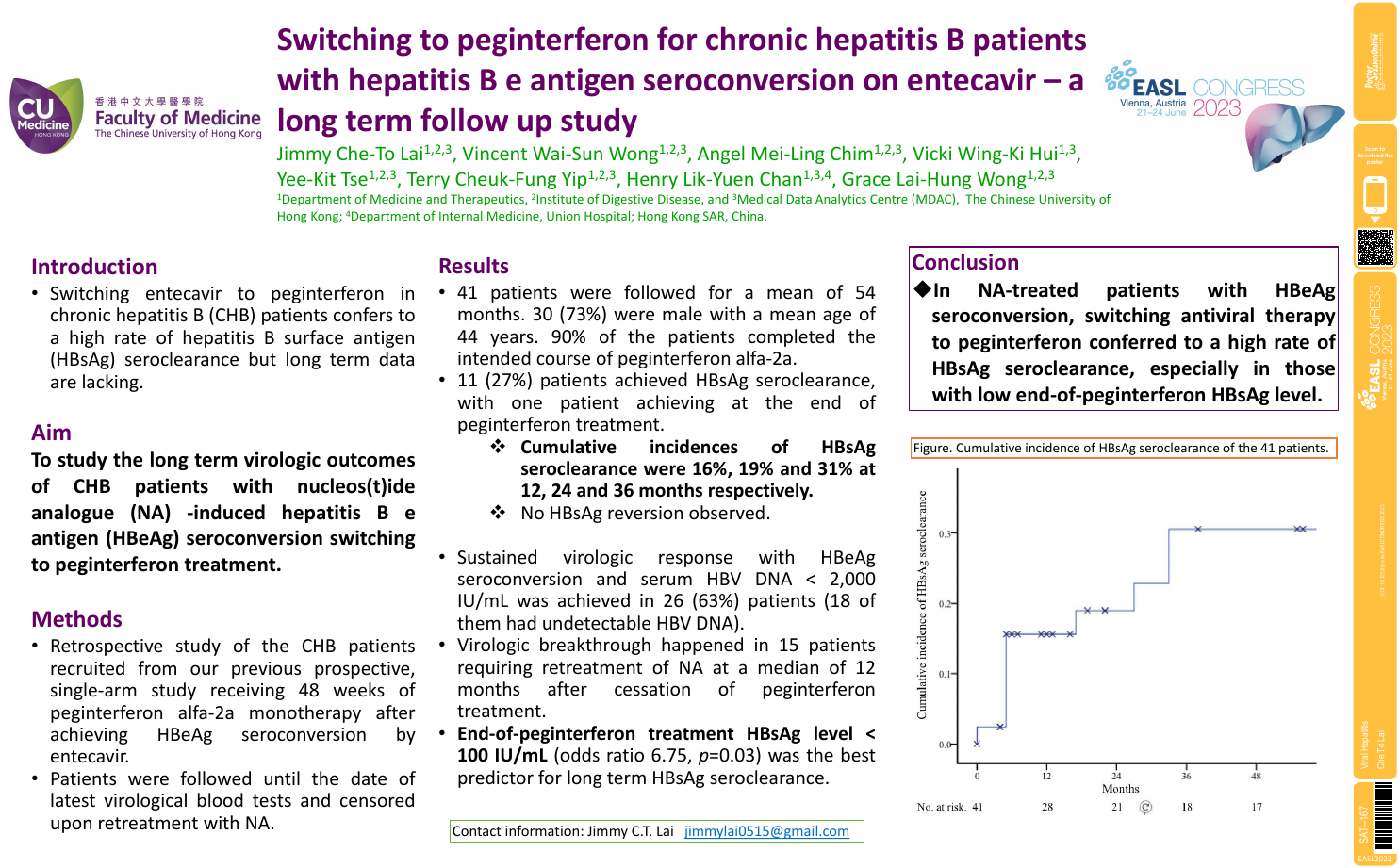
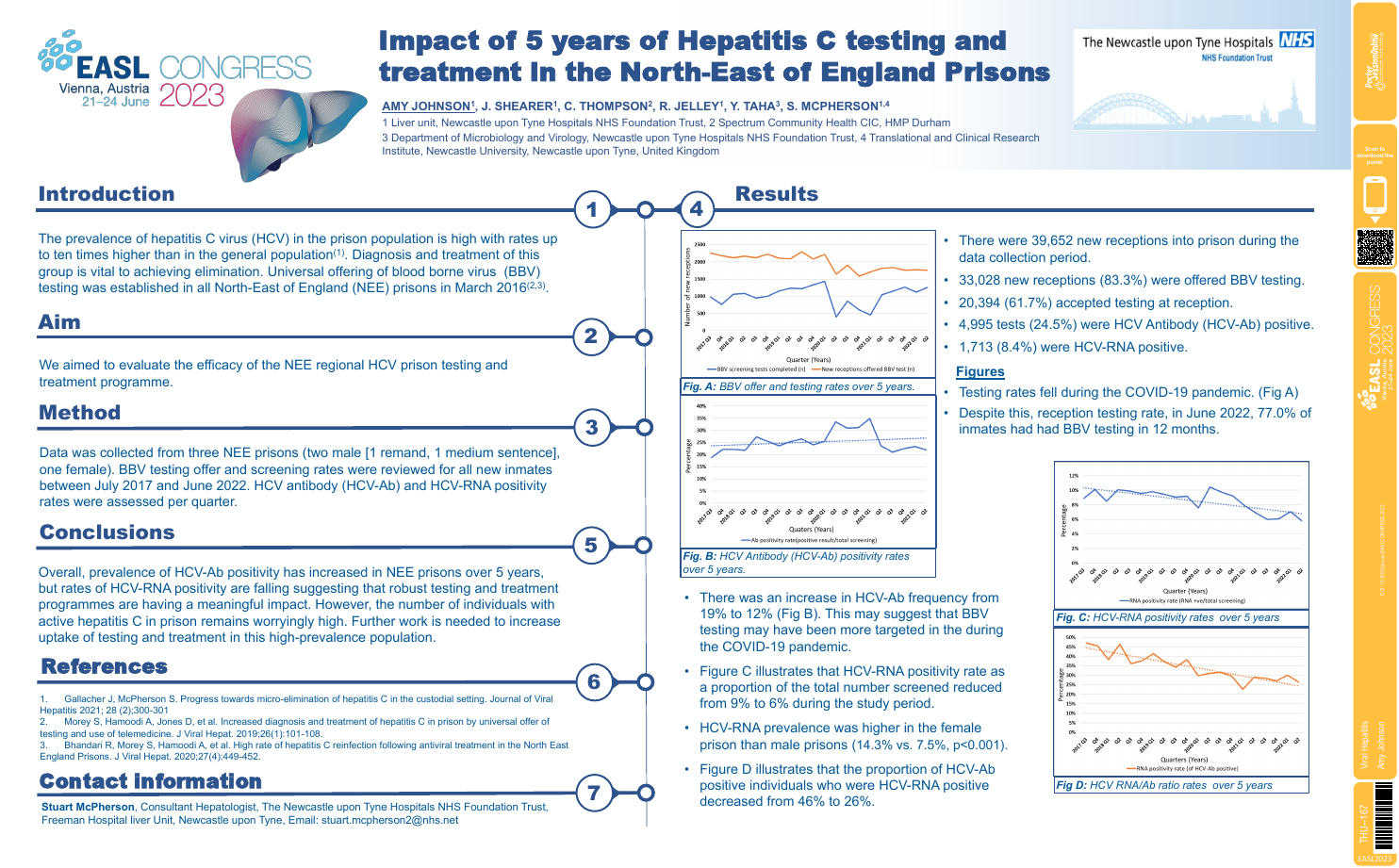
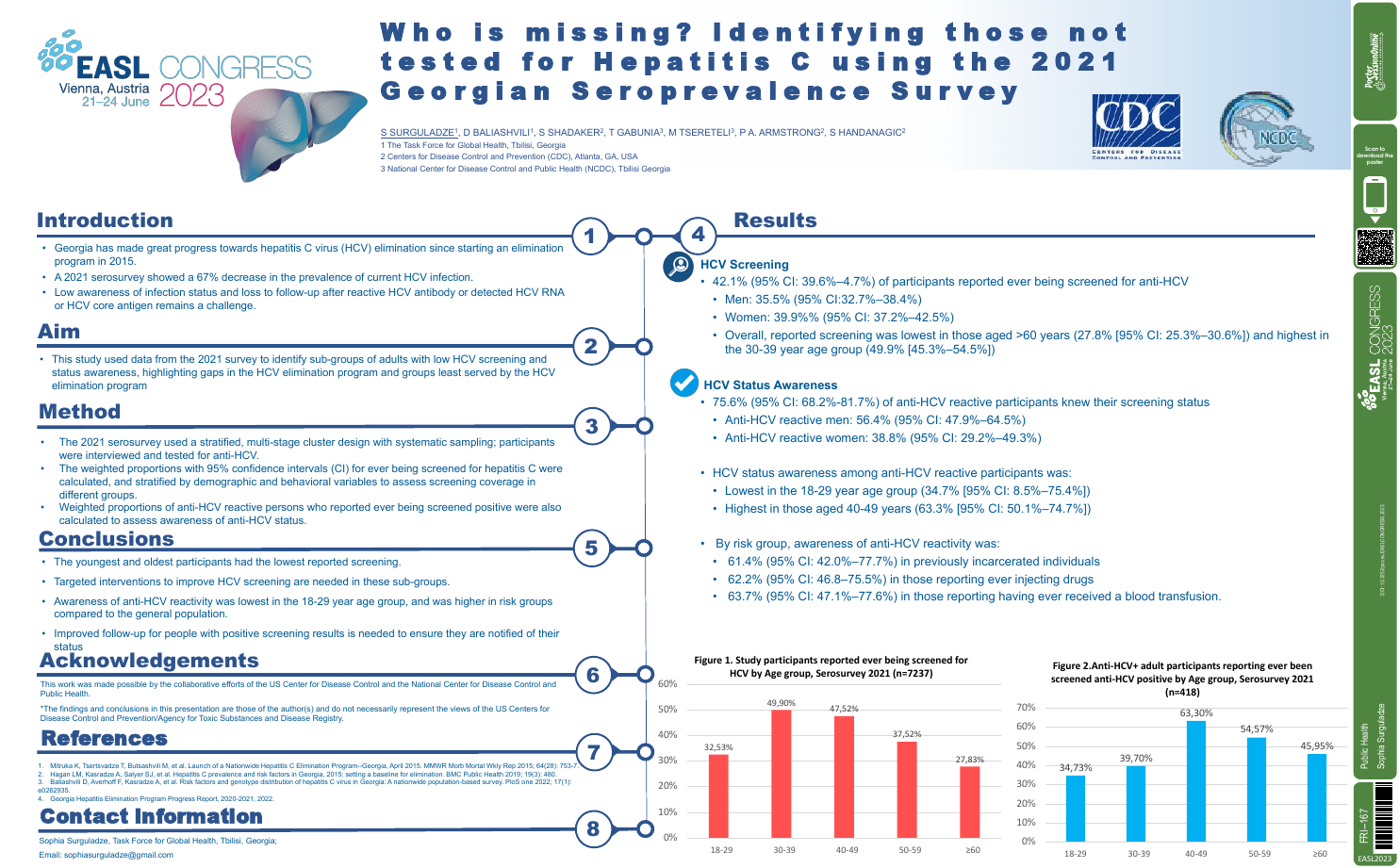
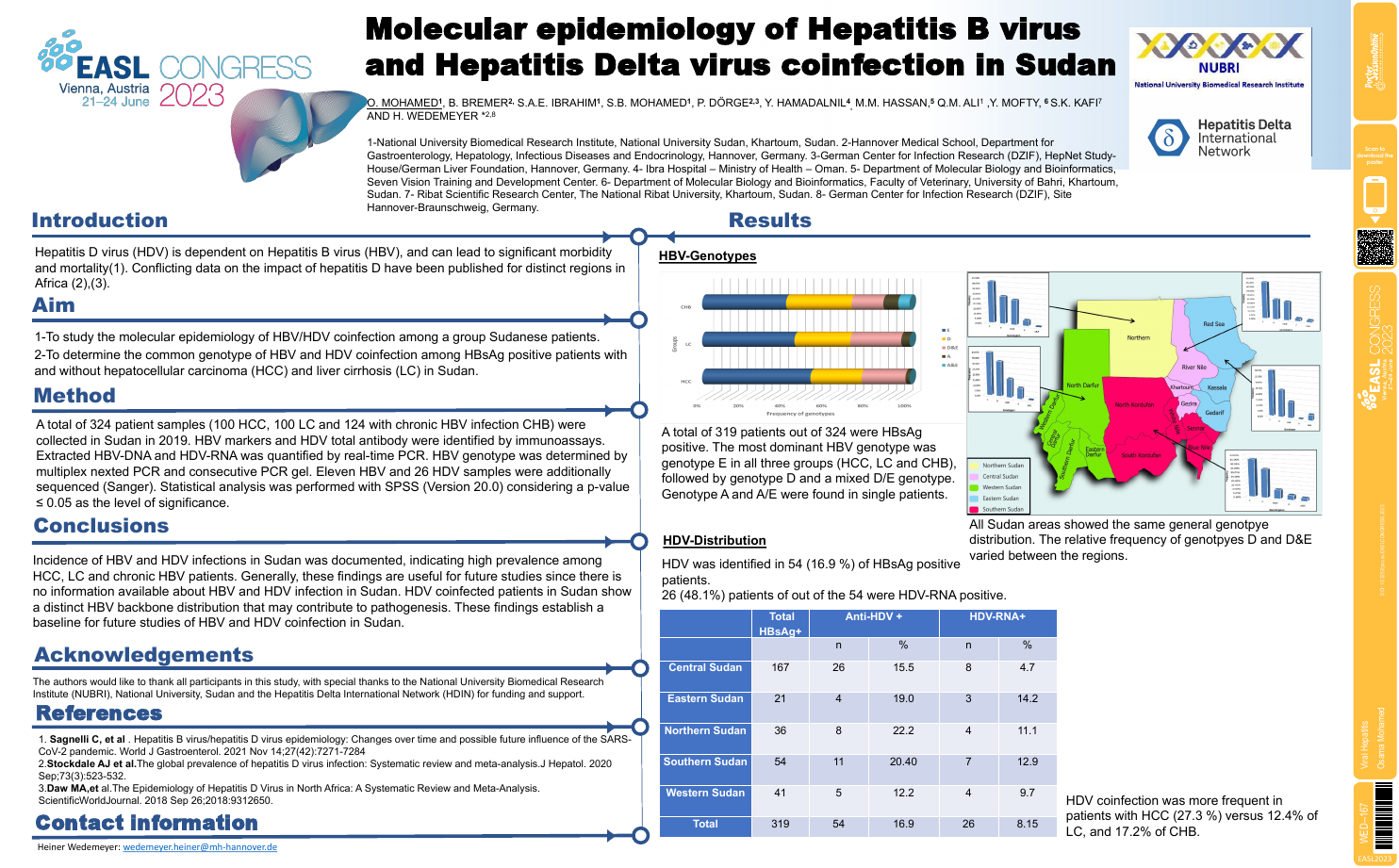
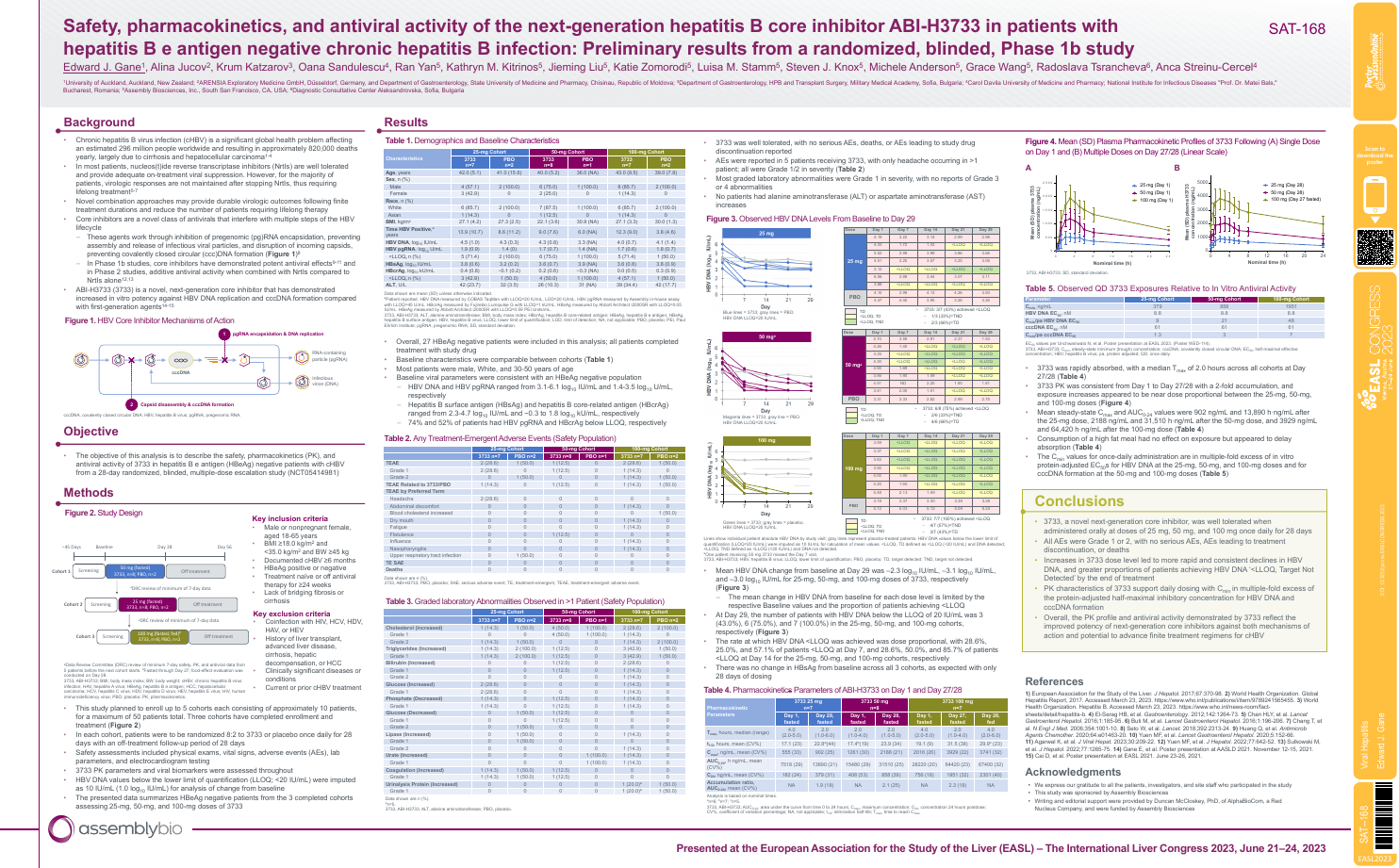
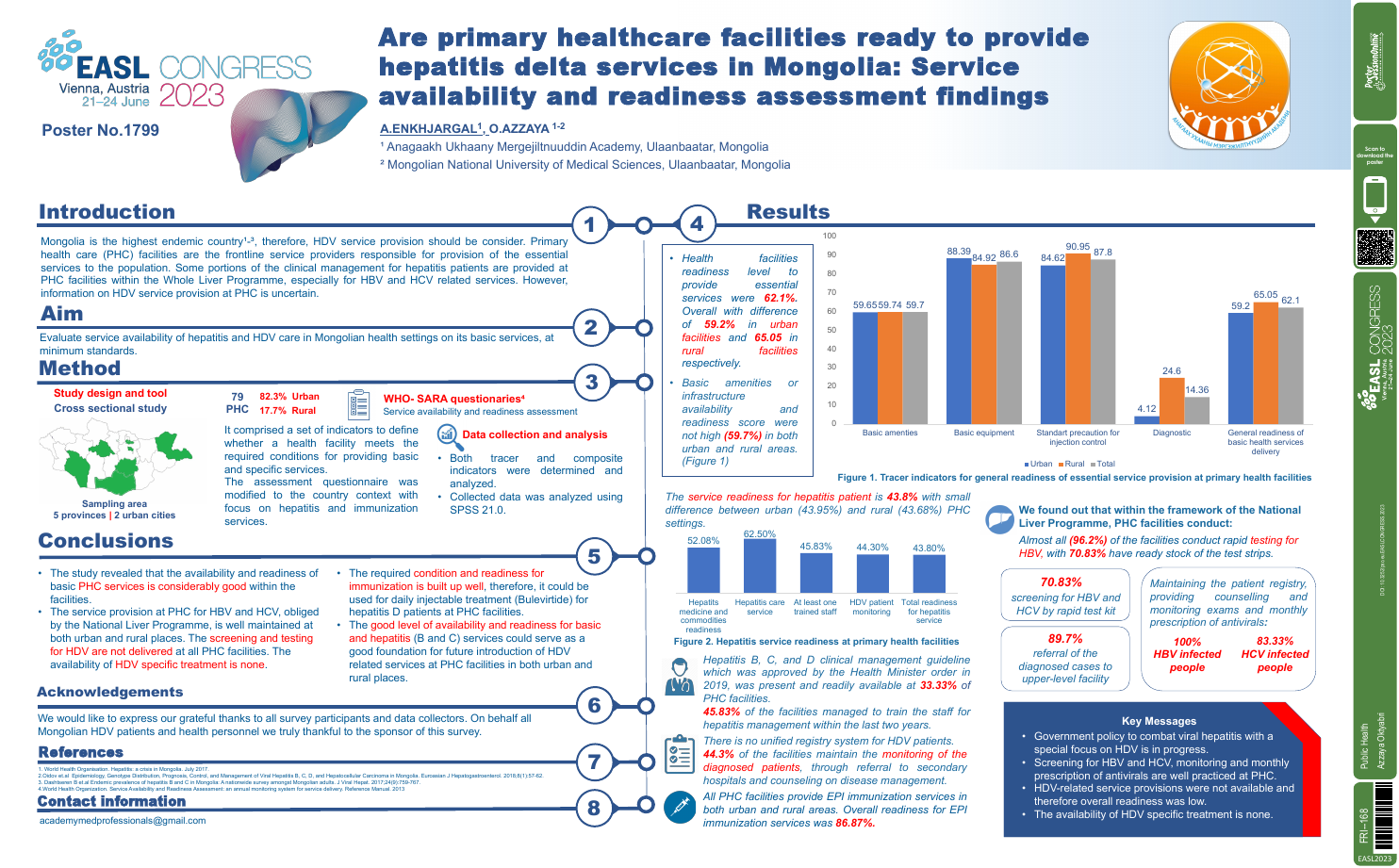
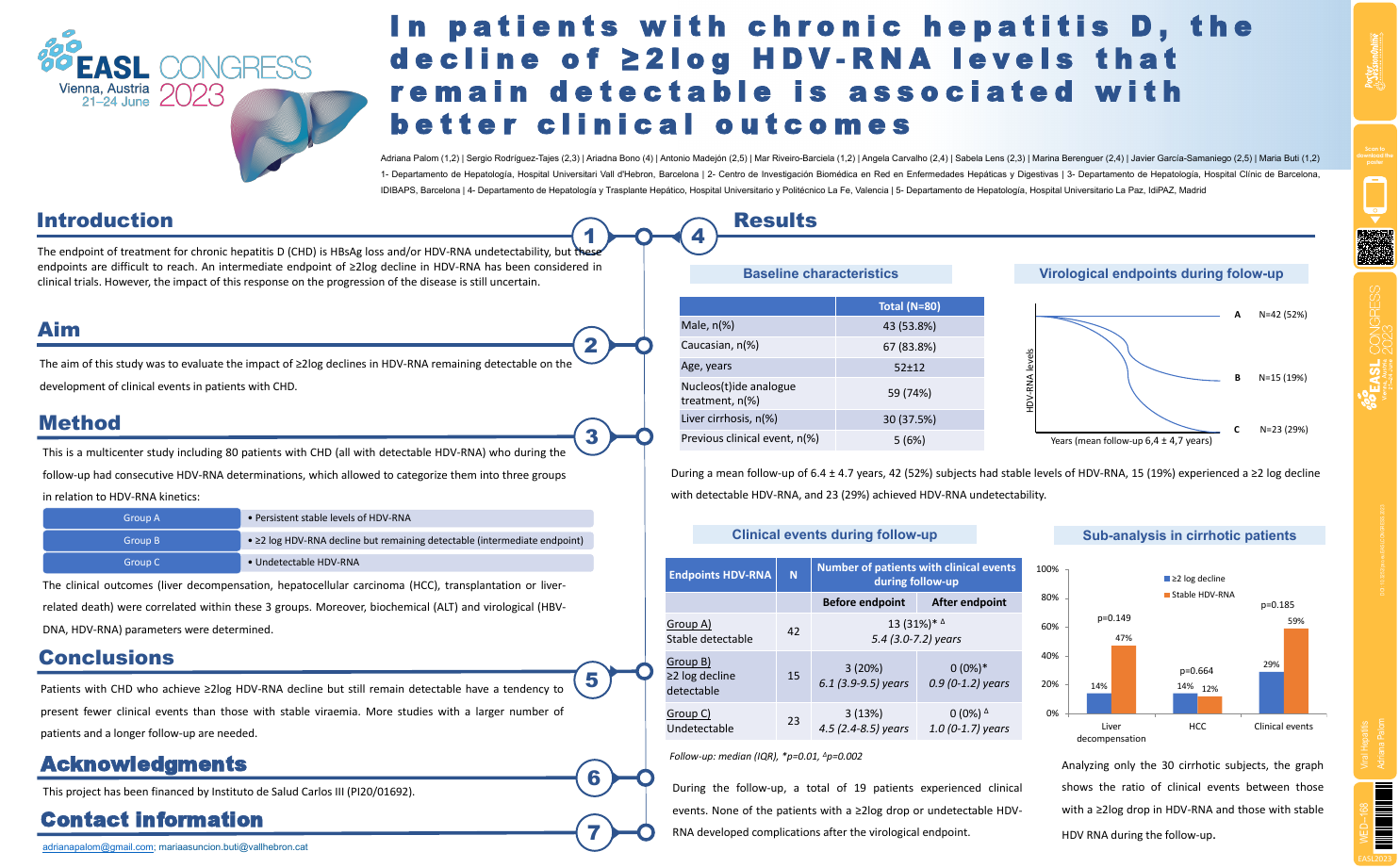
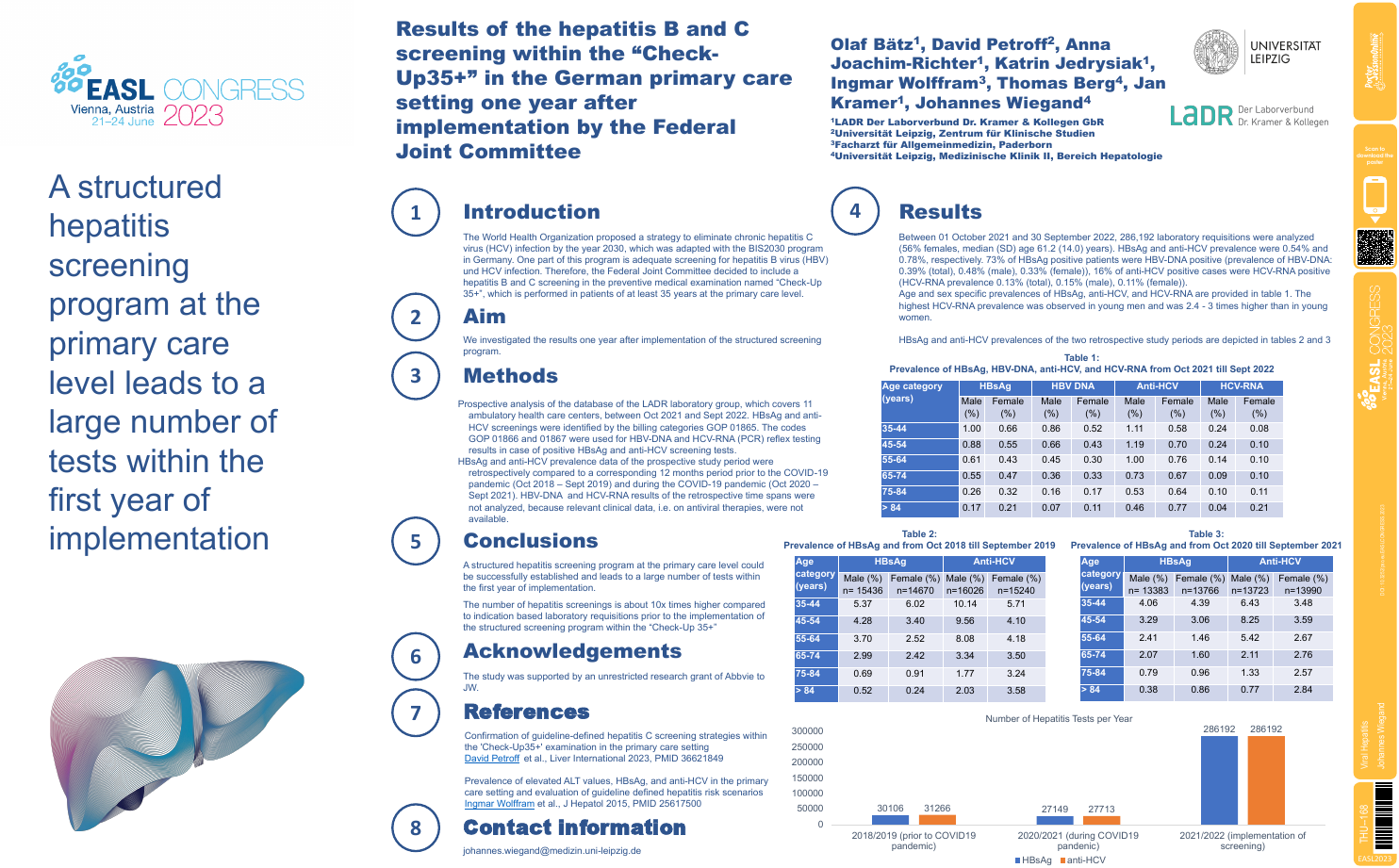
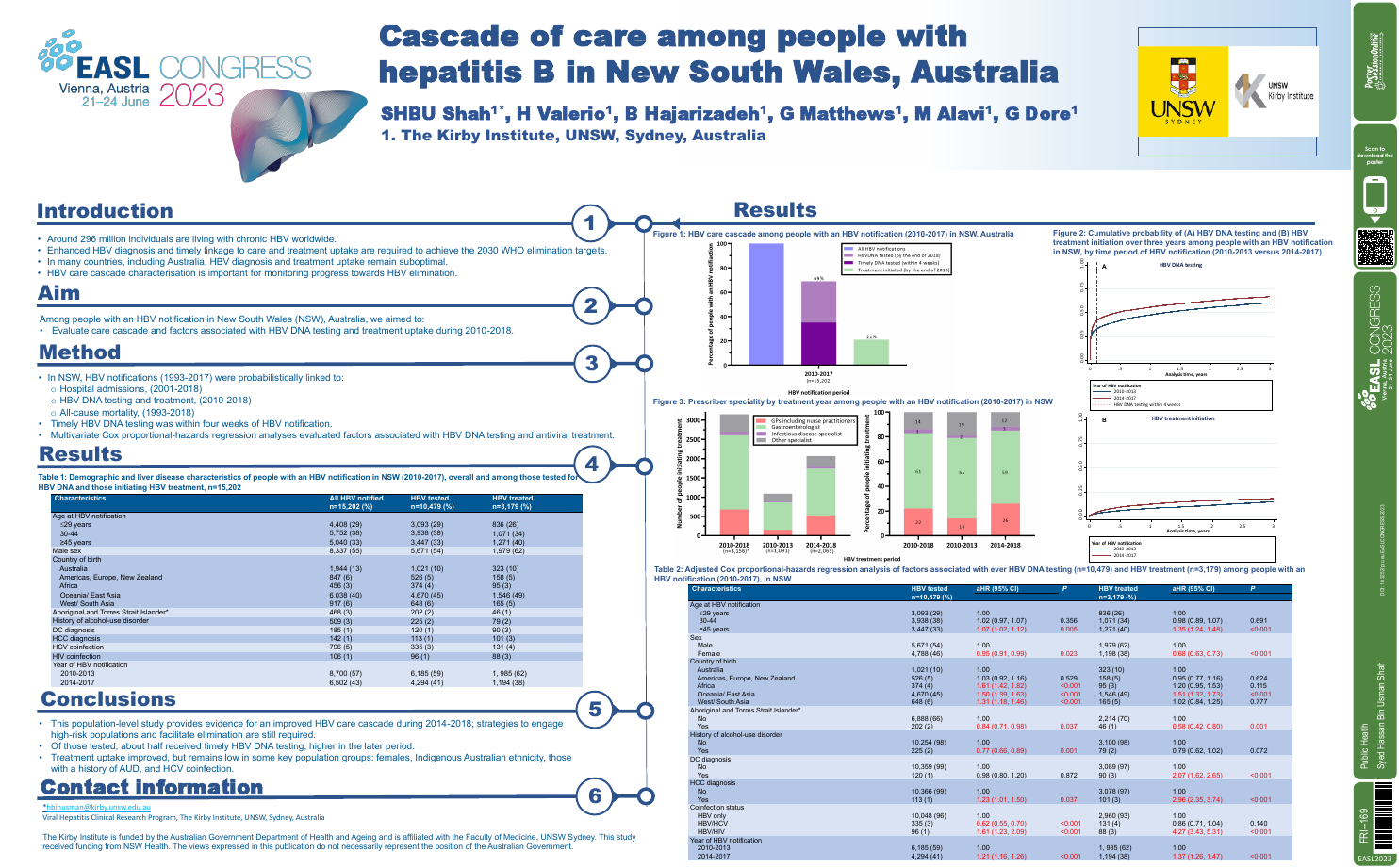
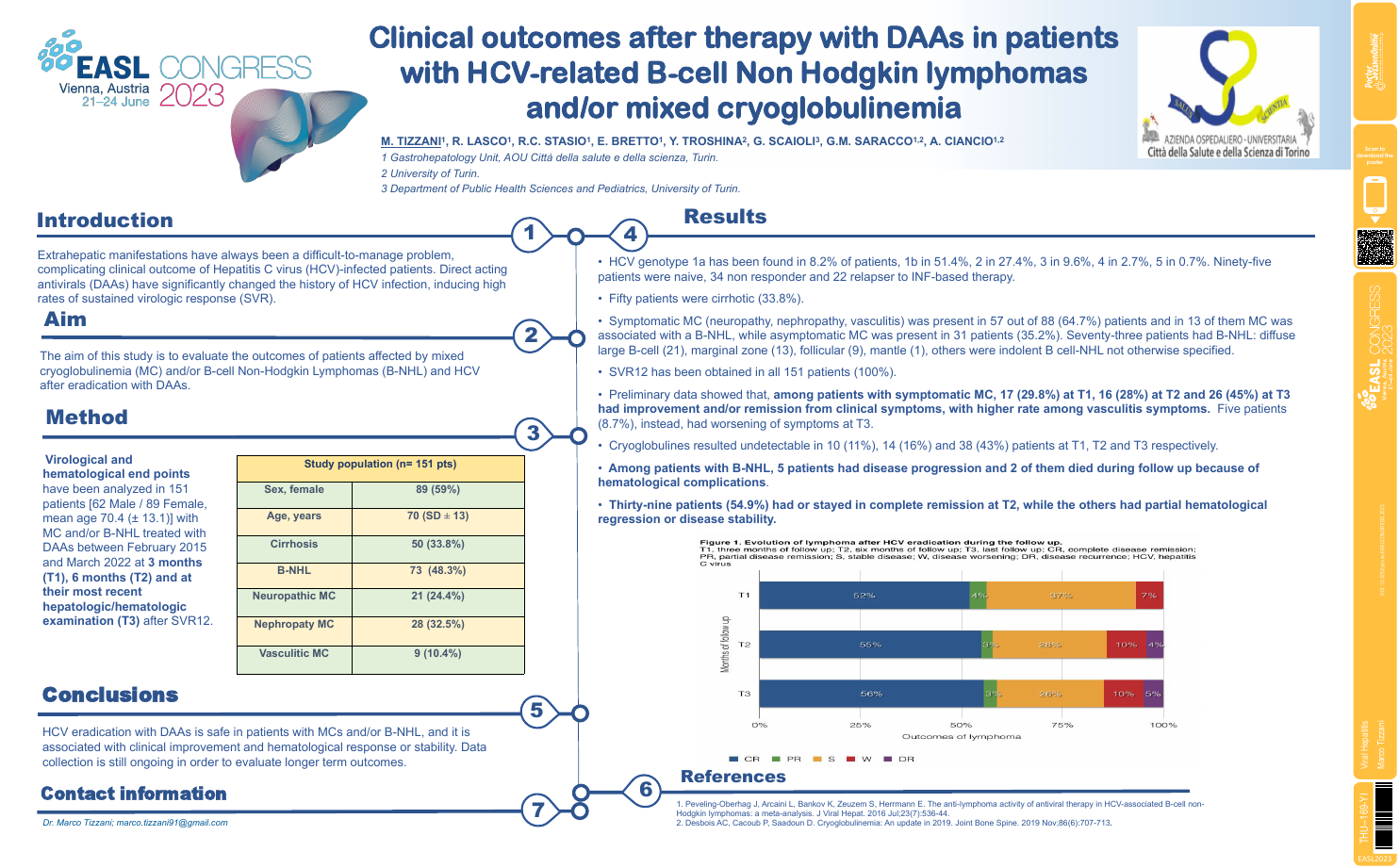
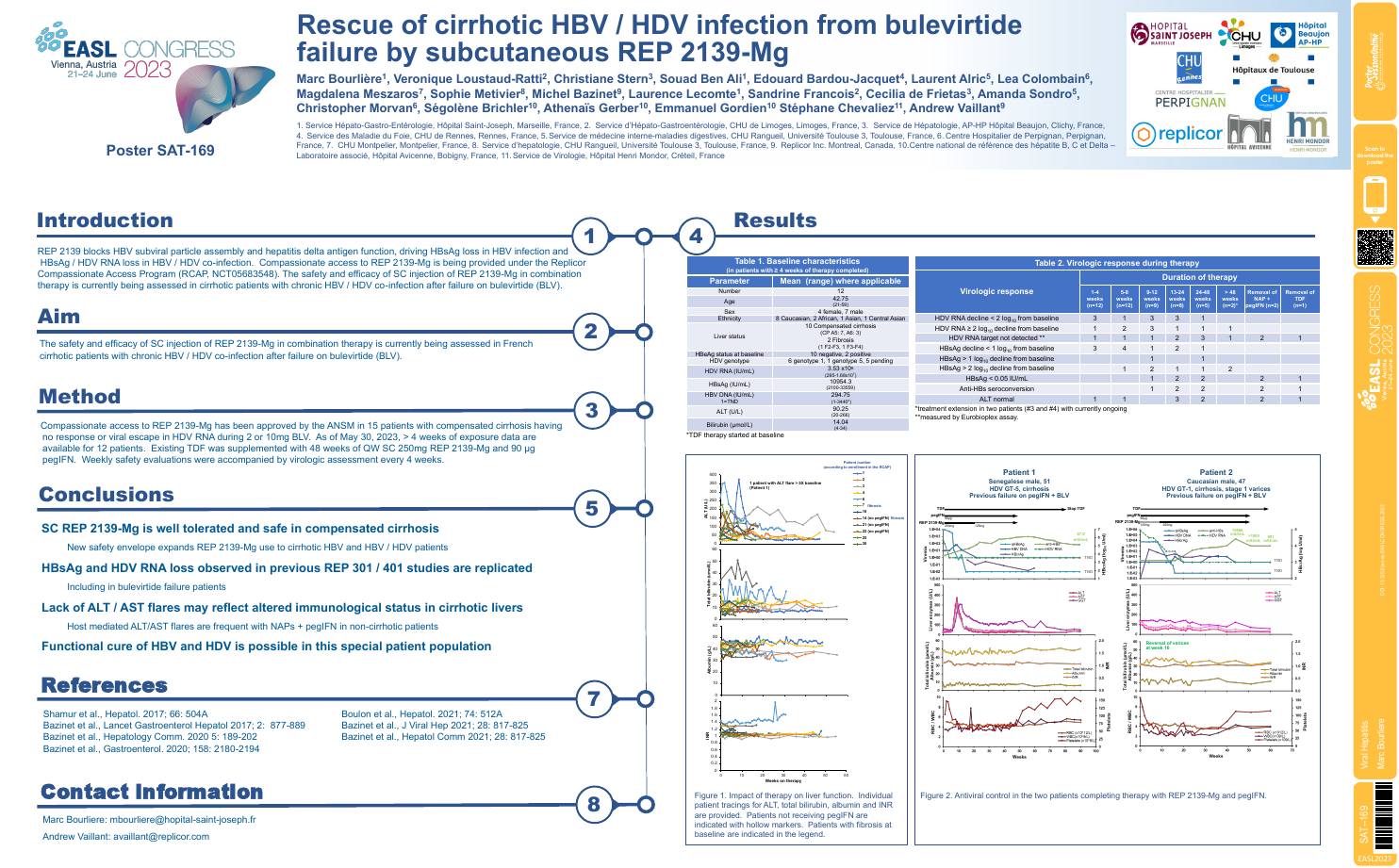
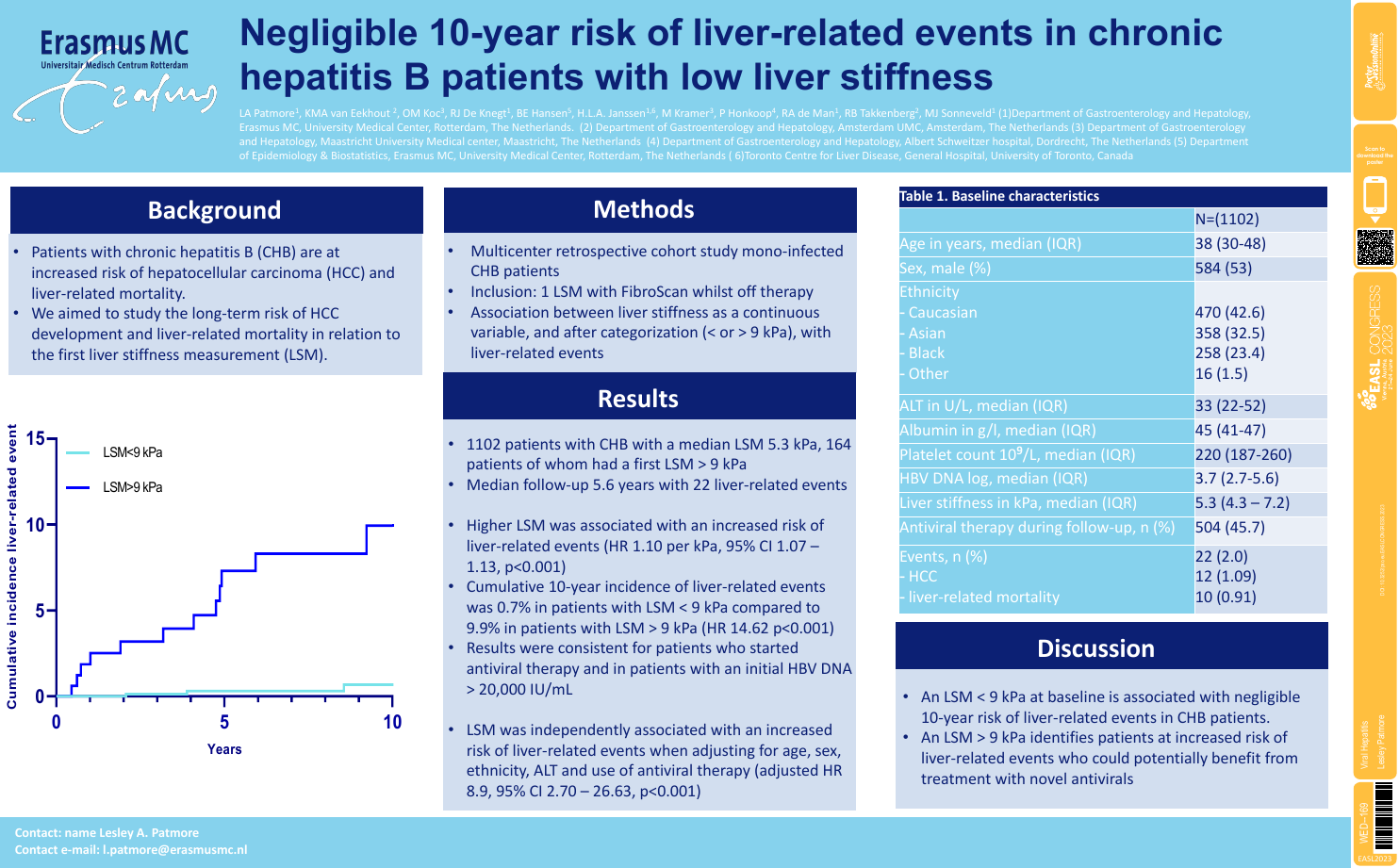
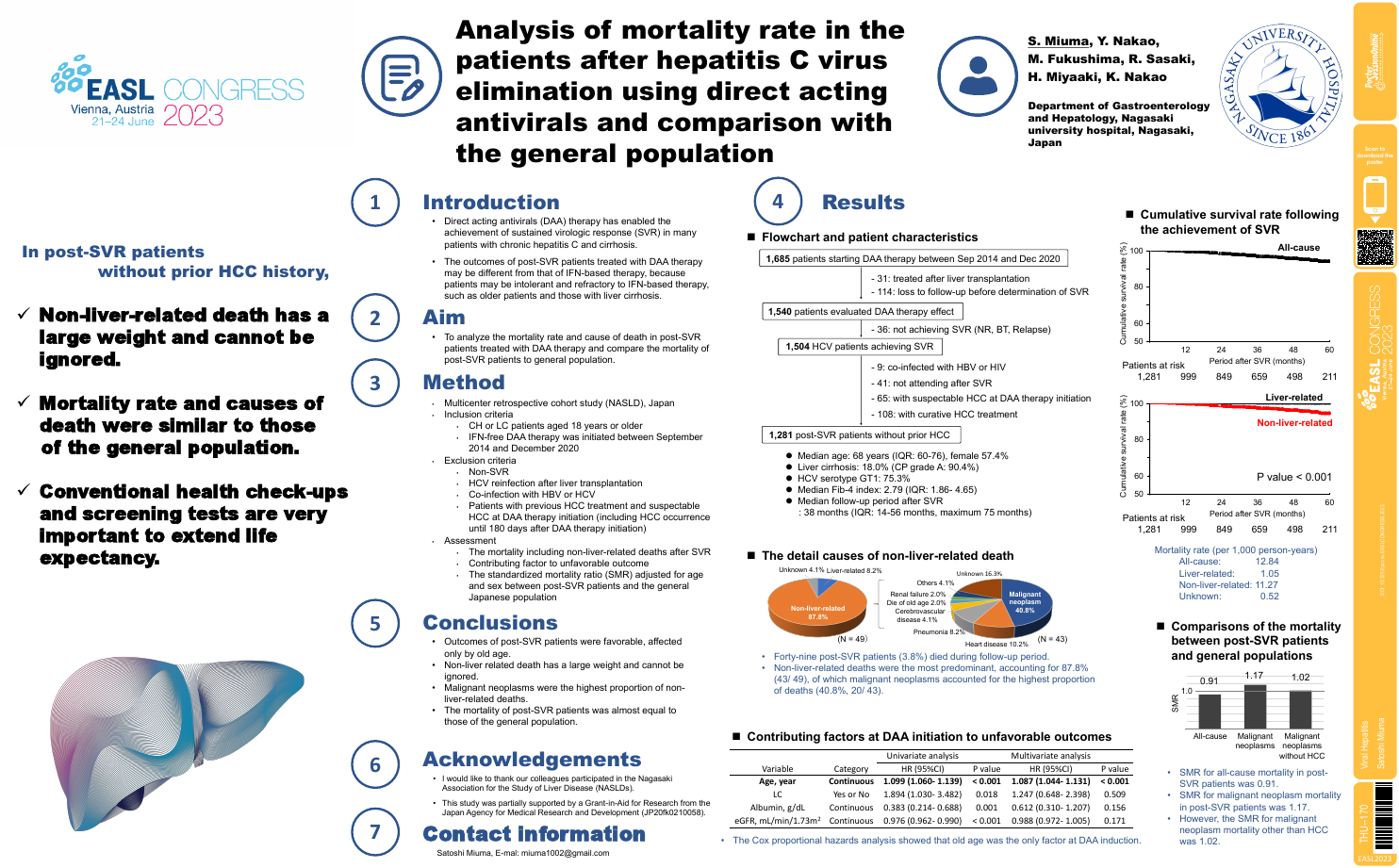
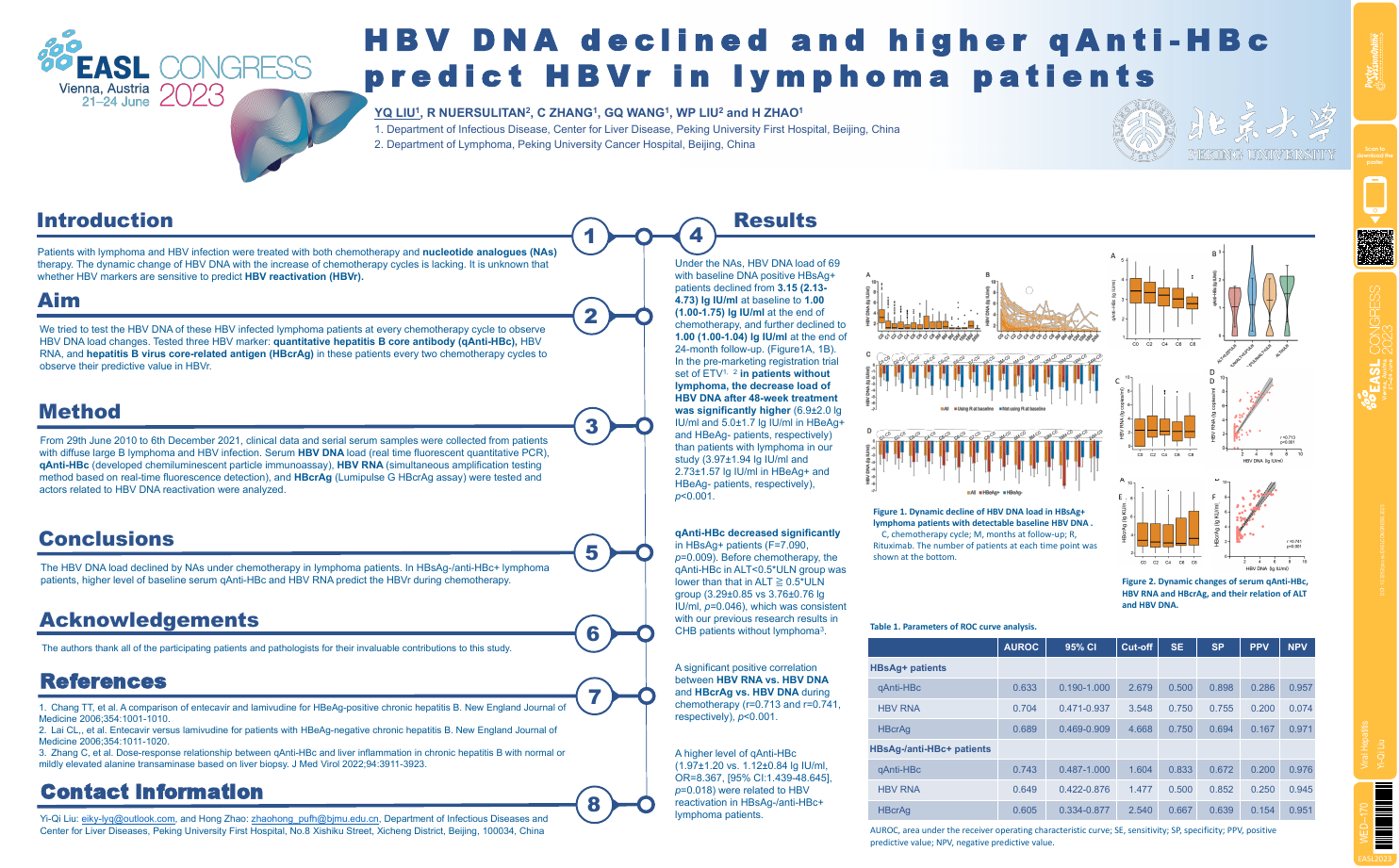
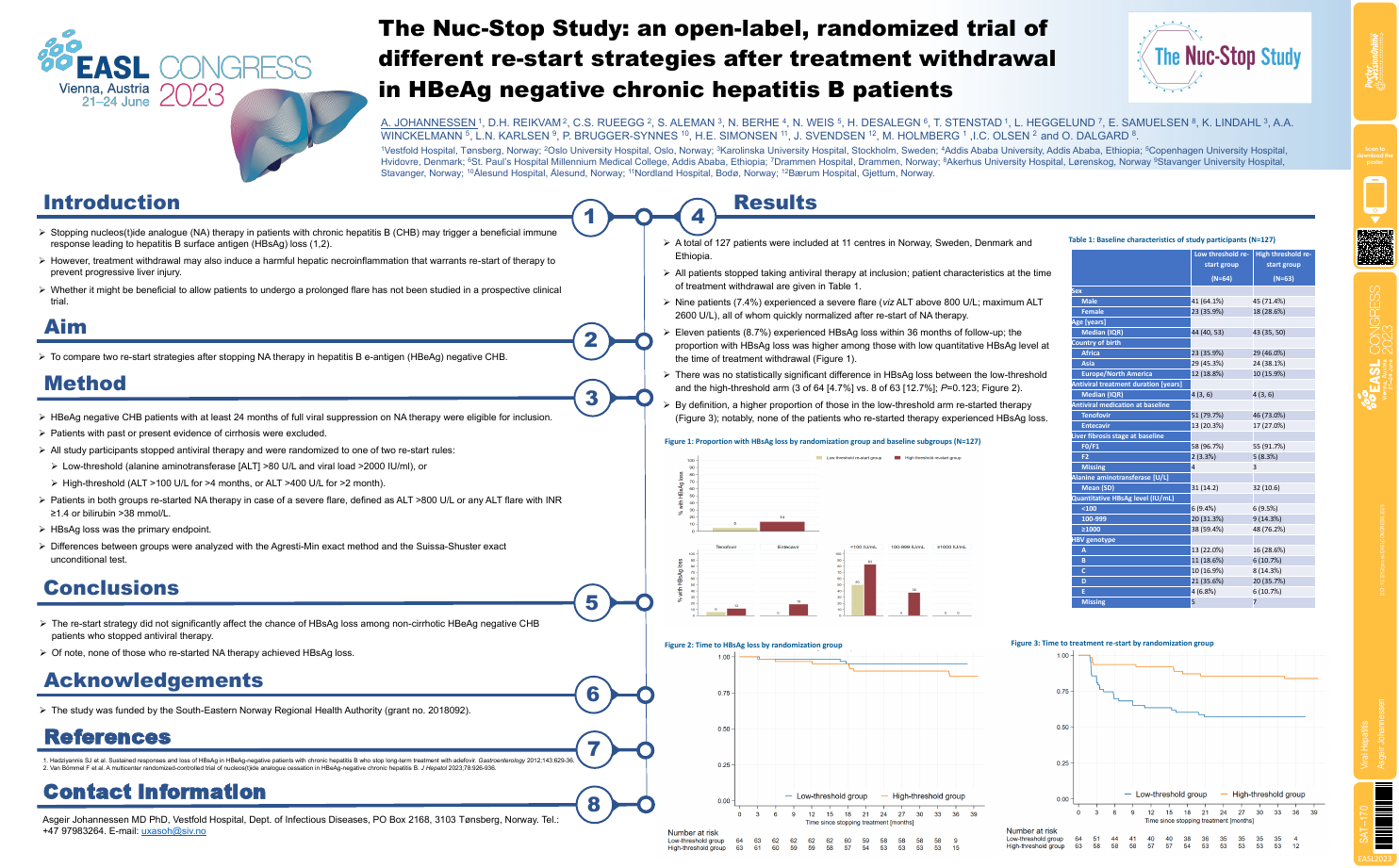
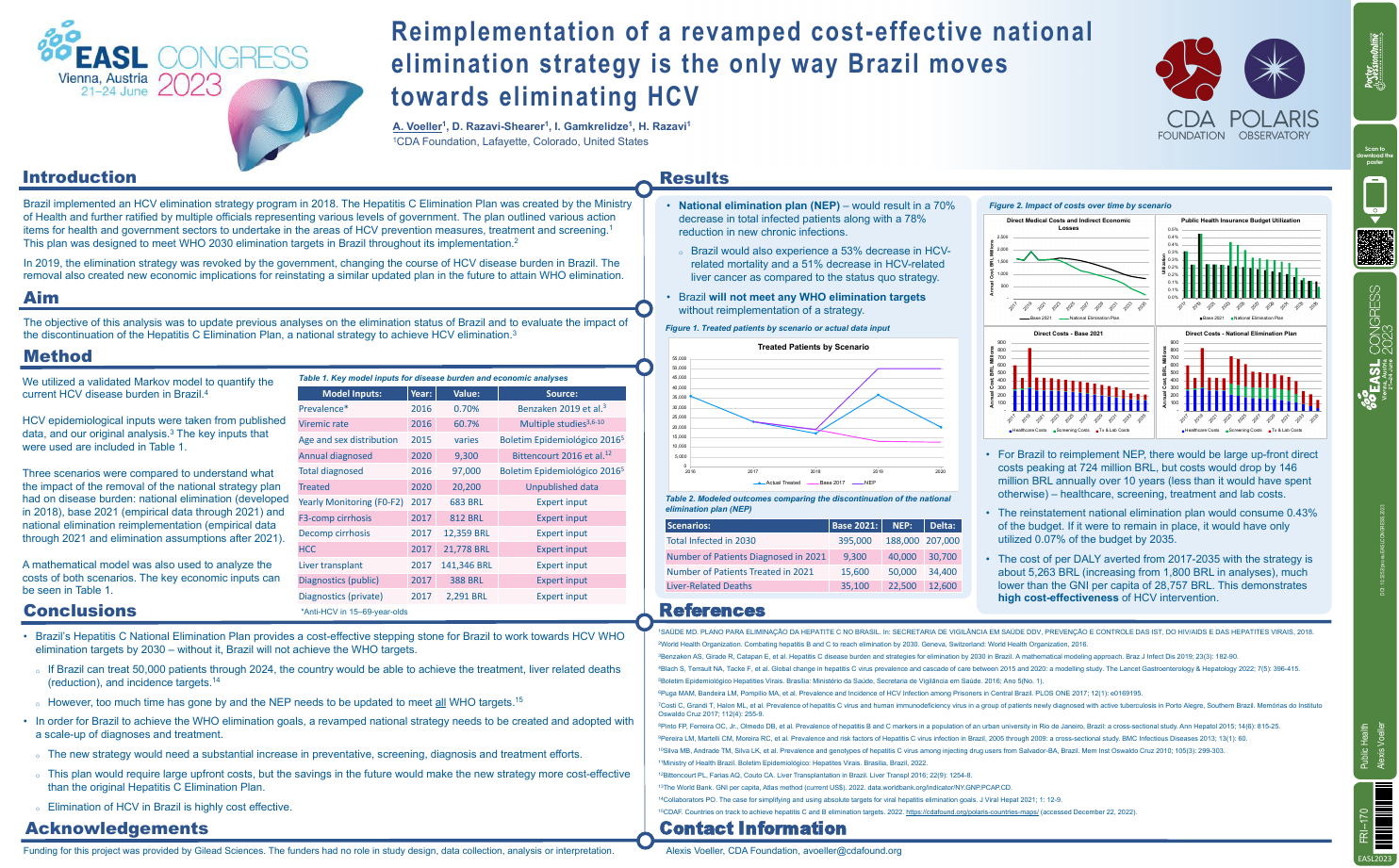
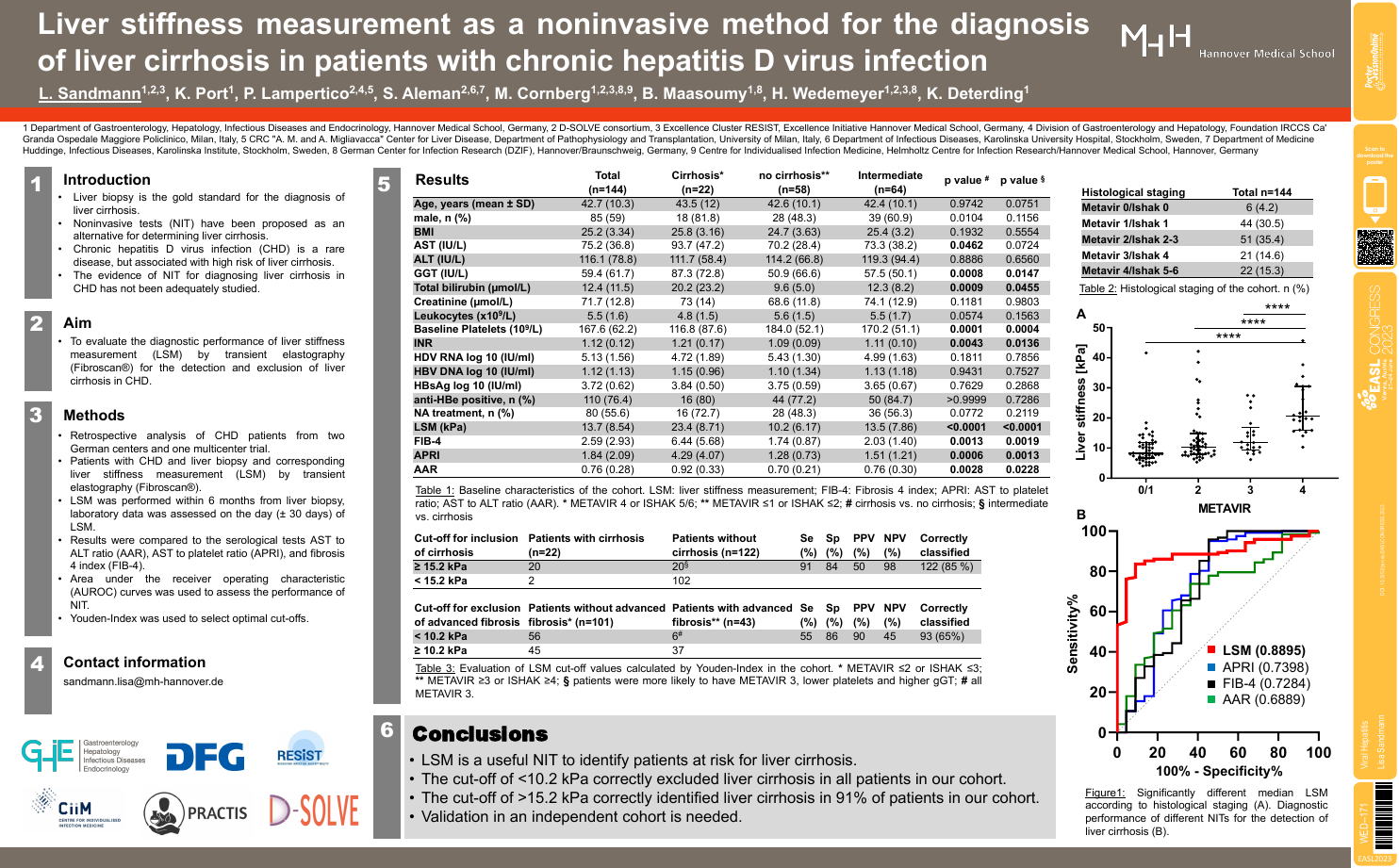
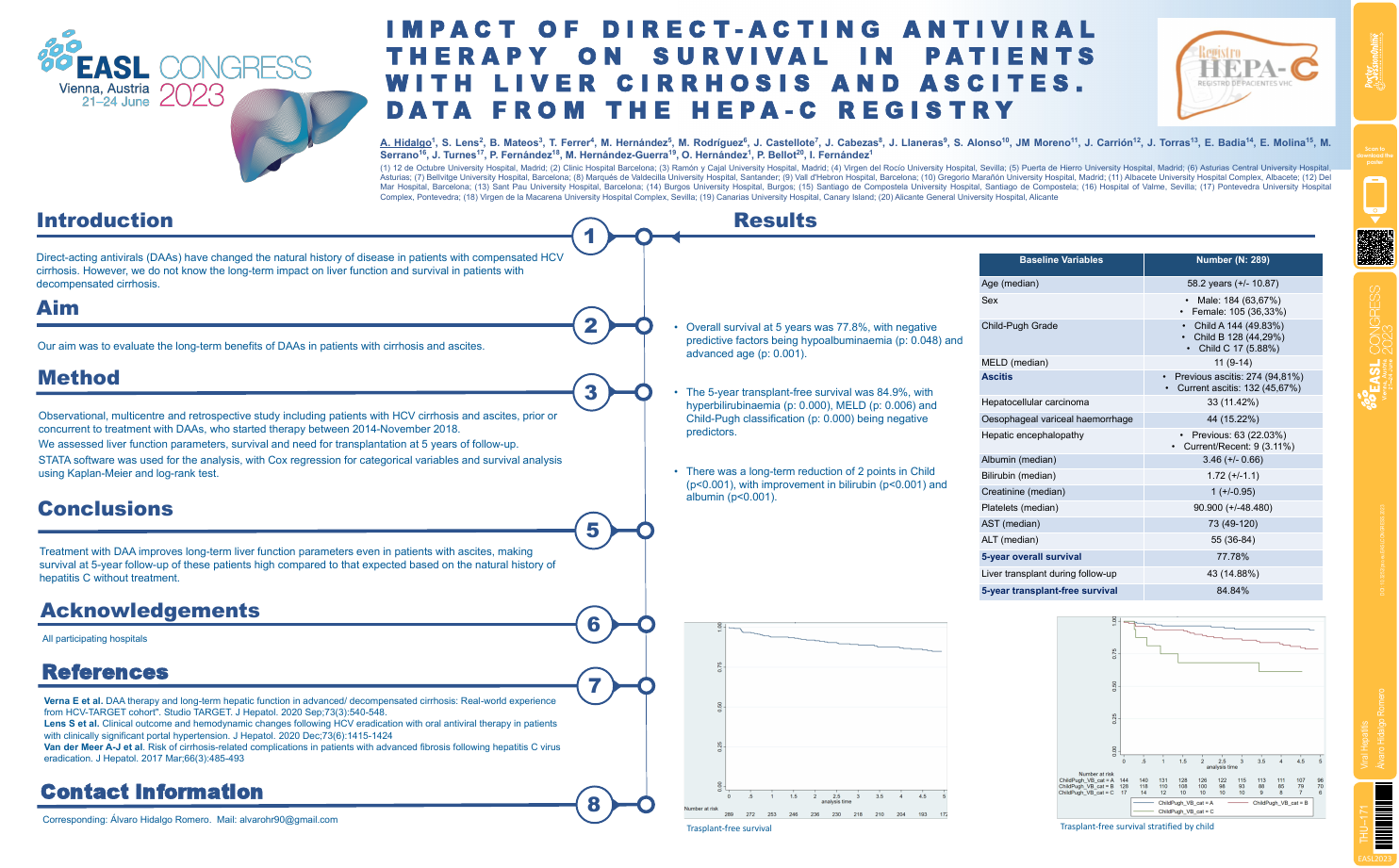
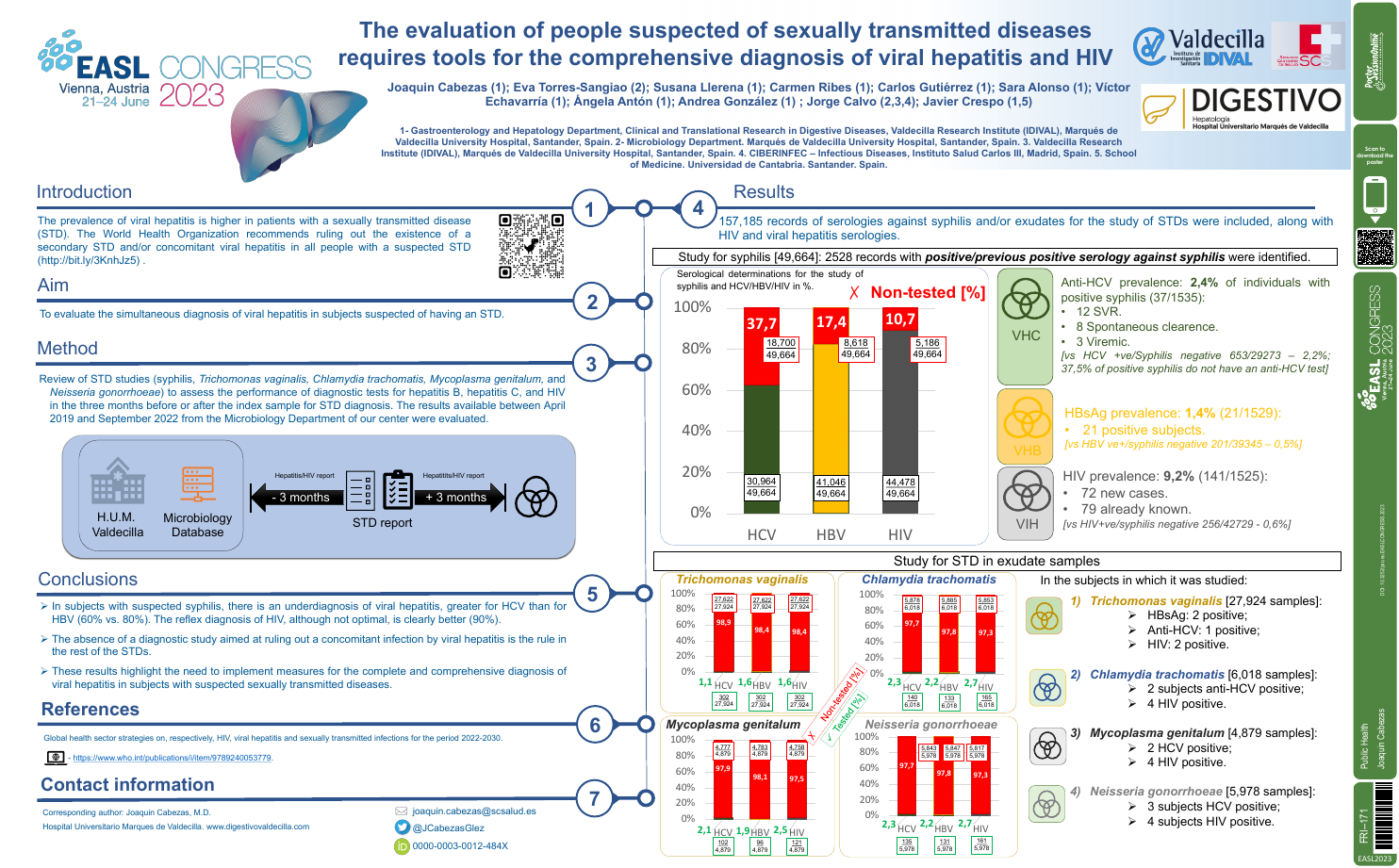
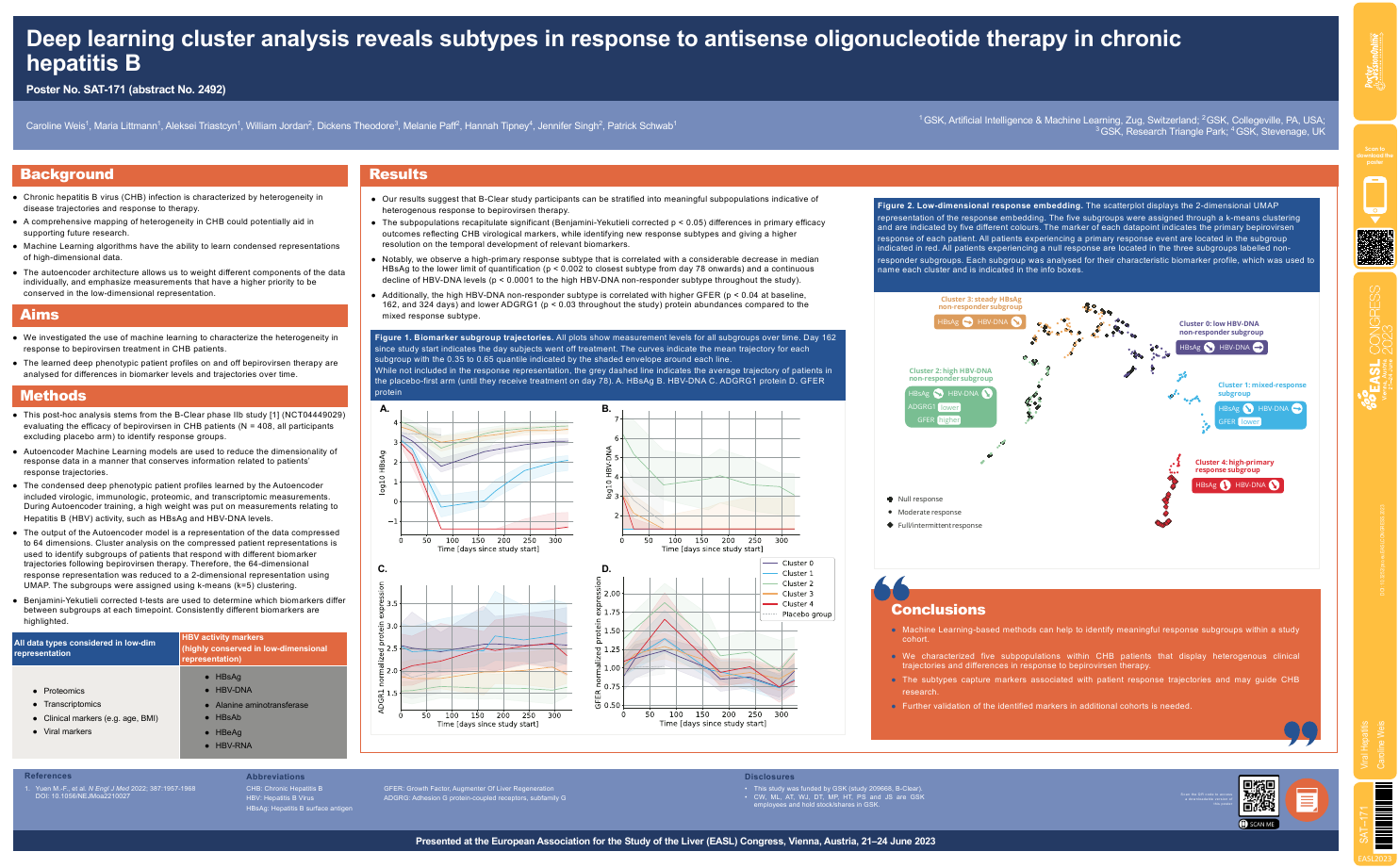
| Switching to peginterferon for chronic h.. | Che To Lai .. | .. | Viral Hepatitis.. | - - | |
| The impact of 5 years of testing for hep.. | Amy Johnson .. | .. | Viral Hepatitis.. | - - | |
| Who is missing? Analysis of the 2021 Geo.. | Sophia Surguladze .. | .. | Public Health.. | - - | |
| Molecular epidemiology of hepatitis B vi.. | Osama Mohamed .. | Osama Mohamed Birgit Bremer Sa.. | Viral Hepatitis.. | - - | |
| Safety, pharmacokinetics, and antiviral .. | Edward J. Gane .. | .. | Viral Hepatitis.. | - - | |
| Are primary healthcare facilities ready .. | Azzaya Oktyabri .. | Enkhjargal Altangerel .. | Public Health.. | - - | |
| In patients with chronic hepatitis D, th.. | Adriana Palom .. | .. | Viral Hepatitis.. | - - | |
| Results of the hepatitis B and C screeni.. | Johannes Wiegand .. | .. | Viral Hepatitis.. | - - | |
| Cascade of care among people with hepati.. | Syed Hassan Bin Usman Shah .. | .. | Public Heatlh.. | - - | |
| Clinical outcomes after therapy with dir.. | Marco Tizzani .. | .. | Viral Hepatitis.. | - - | |
| Rescue of cirrhotic HBV / HDV infection .. | Marc Bourliere .. | .. | Viral Hepatitis.. | - - | |
| Neglible 10-year risk of liver-related e.. | Lesley Patmore .. | KMA van Eekhout, OM Koc, RJ De.. | Viral Hepatitis.. | - - | |
| Analysis of mortality rate in the patien.. | Satoshi Miuma .. | .. | Viral Hepatitis.. | - - | |
| Steadily decline of HBV DNA load under N.. | Yi-Qi Liu .. | .. | Viral Hepatitis.. | - - | |
| The Nuc-Stop study: an open-label, rando.. | Asgeir Johannessen .. | .. | Viral Hepatitis.. | - - | |
| Reimplementation of a revamped cost-effe.. | Alexis Voeller .. | .. | Public Health.. | - - | |
| Liver stiffness measurement as a noninva.. | Lisa Sandmann .. | .. | Viral Hepatitis.. | - - | |
| Impact of direct-acting antiviral therap.. | Álvaro Hidalgo Romero .. | .. | Viral Hepatitis.. | - - | |
| The evaluation of people suspected of se.. | Joaquin Cabezas .. | .. | Public Health.. | - - | |
| Deep learning cluster analysis reveals s.. | Caroline Weis .. | Maria Littmann, Aleksei Triast.. | Viral Hepatitis.. | - - | |
Abstract
Thunderstorm-related asthma in patients sensitised to olea europaea pollen: twenty emergency department visits for asthmatic symptoms in one single day Losappio, Laura1; Heffler, Enrico2; Falco, Antonio1; Contento, Francesco1; Cannito, Cosimo1; Rolla, Giovanni2 1"Dimiccoli" Hospital, Emergency Department, Barletta, Italy; 2University of Torino - AO Mauriziano "Umberto I", Allergy and Clinical Immunology, Torino, Italy
Background: Associations between thunderstorm and asthma morbidity have been reported in several countries. Common to all epidemics of thunderstorm-related asthma is a significant increase in atmospheric allergen load during and immediately after a thunderstorm. Sensitization to Alternaria species or to grass and parietaria pollens has been suggested to play a key role in thunderstorm-related asthma. The only reported event of thunderstorm-related asthma in Mediterranean area was attributed to sensitization to parietaria pollen.
Method: here we describe a series of 20 patients who presented to Emergency Department in Barletta (94,000 inhabitants), Puglia (Italy) for sudden and severe asthmatic symptoms between May 27th and 28th 2010 (from15:36 to 5:02), immediately after a violent thunderstorm which occurred following a very hot morning (mean temperature: 29°C). All the patients have been subsequently visited by an allergist and underwent allergological work-up which included skin prick tests and a careful clinical history. Local pollen counts were available.
Result: Between May 10th and June 10th 2010, 86 Emergency Department asthma visits were recorded, 20 of them during the study day. Patients' mean age was 44.25 +/- 18.5 years (range: 9-81), 8/20 females, 2 smokers, 16 with a previous history of known respiratory allergy. Only two patients regularly took anti-asthma drugs. All 20 patients were sensitized to Olea europaea pollen, 7 of whom were monosensitized. Ten patients were sensitized to grass, 7 to parietaria, 5 to compositae, 5 to cypress, 5 to house dust mites, 3 to dog and 1 to cat danders. No patient was sensitized to Alternaria. Mean pollen count was 17 granules/m3 for Olea europaea, 6 granules/m3 for grass pollen.
Conclusion: This is, in our knowledge, the second epidemic of thunderstorm related asthma described in Mediterranean area and the first one in which sensitization to Olea europaea played a key-role. In conclusion, our report indicates that thunderstorm asthma may involve different allergens (not only fungal spores and grass or parietaria pollen) in different geographic areas, depending on the seasonality of thunderstorms and allergenic pollen.